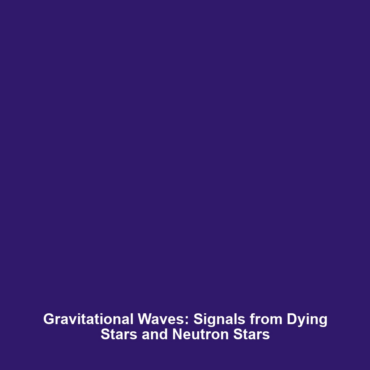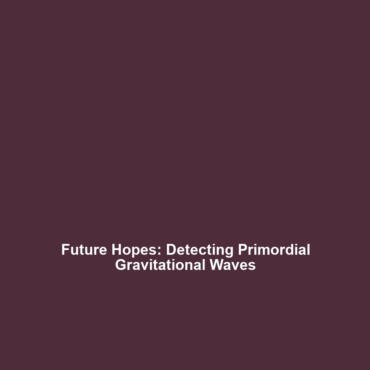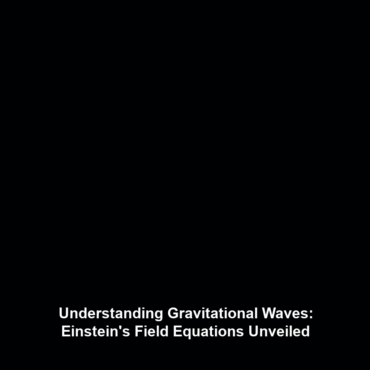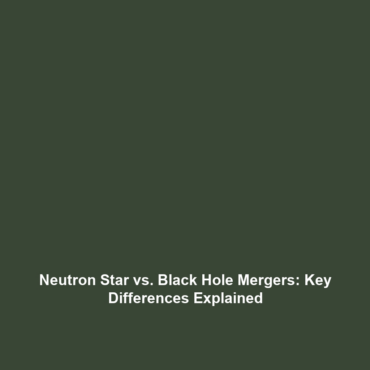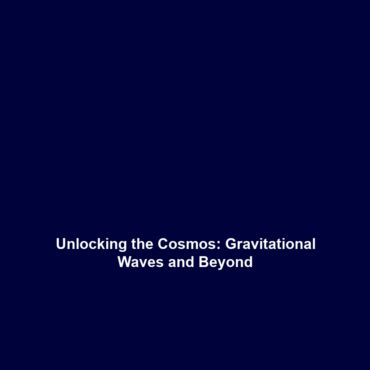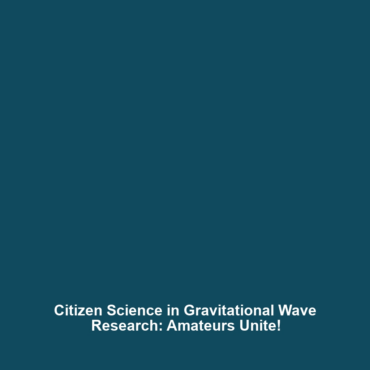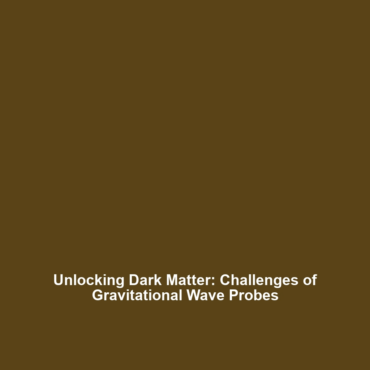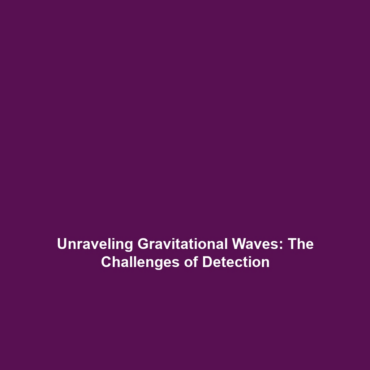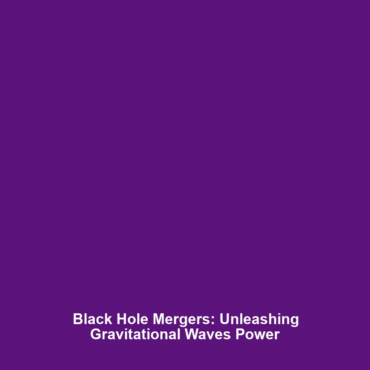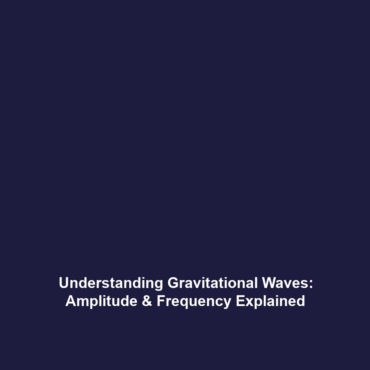Gravitational Wave Signals from Dying Stars, Neutron Stars, and Collapsing White Dwarfs
Introduction
Gravitational waves represent a groundbreaking aspect of astrophysical research, enabling scientists to observe the universe’s most violent phenomena. Recently, the detection of gravitational wave signals from dying stars, neutron stars, and collapsing white dwarfs has sparked significant interest. These signals not only enhance our understanding of stellar evolution but also provide insight into the nature of matter under extreme conditions, such as in neutron stars. The study of these gravitational waves is crucial for advancements in astrophysics and cosmology, laying the groundwork for future discoveries.
Key Concepts
Understanding the gravitational wave signals from dying stars, neutron stars, and collapsing white dwarfs involves several key concepts:
Dying Stars
As stars exhaust their nuclear fuel, they undergo various stages of mortality, often resulting in supernovae. During these cataclysmic events, gravitational waves are emitted, providing vital data on stellar mass and composition.
Neutron Stars
Neutron stars are remnants of supernova explosions, characterized by their extreme density. Their mergers generate detectable gravitational waves, offering evidence of their existence and informing the study of fundamental physics.
Collapsing White Dwarfs
When white dwarfs accumulate mass beyond a critical threshold, they can undergo catastrophic collapse. This process generates gravitational waves that can be analyzed to learn more about the physics governing stellar remnants.
Applications and Real-World Uses
The gravitational wave signals from dying stars, neutron stars, and collapsing white dwarfs have several significant real-world applications:
- Astrophysical Research: The insights gained from these signals inform theories regarding the life cycles of stars.
- Cosmological Measurements: Gravitational waves serve as tools to measure cosmic distances and the expansion rate of the universe.
- Testing General Relativity: Analyzing these waveforms allows scientists to test predictions made by Einstein’s theory of general relativity.
Current Challenges
Despite the progress made, several challenges remain in the study of gravitational wave signals:
- Detection Sensitivity: Enhancing the sensitivity of detectors like LIGO and Virgo is crucial for capturing more subtle signals.
- Signal Interpretation: Interpreting the signals accurately requires advanced models, which can be computationally intensive.
- Public Engagement: Raising awareness and understanding of gravitational waves within the broader community can be challenging.
Future Research and Innovations
Upcoming research and technological innovations in this field aim to revolutionize our understanding of gravitational waves:
- Next-Generation Detectors: Projects like the Einstein Telescope are expected to significantly enhance detection capabilities.
- Multi-Messenger Astronomy: Combining gravitational wave observations with electromagnetic signals promises richer data.
- Machine Learning Applications: Leveraging AI for signal detection and interpretation is an area of active research.
Conclusion
The gravitational wave signals from dying stars, neutron stars, and collapsing white dwarfs significantly contribute to our understanding of the universe. As research progresses, these observations are expected to yield transformative insights into astrophysics and the fabric of spacetime. For more information on related topics, check out our articles on neutron stars and supernovae.
